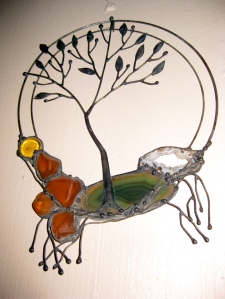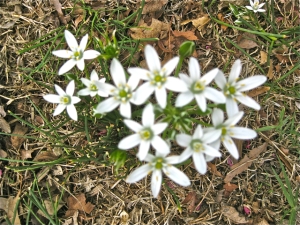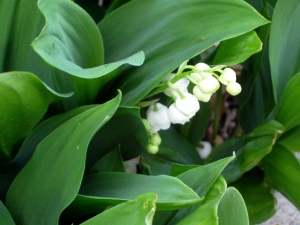
Choose your size, S-XL, and use only once. (All pictures by Marylin Warner)
On February 1st, I wrote a post—“What We Learn While We Wait”—about the things I learn when I visit my mother each month and spend much of my time just sitting with her while she naps. This is Part 2 of that lesson. Now I sit with Mom in her hospital room. This is our new journey together; there are new lessons…and decisions to make. This emergency will pass, but there will be others, and I need to be prepared.
At Mom’s apartment, I’m surrounded by pictures, books and keepsakes, all of them familiar because I chose them to bring from their house to make the move here for my parents easier and more comfortable. Here in Mom’s hospital room there are no pictures on the wall, and though I’m not unfamiliar with computers and IV lines and bags and procedures, they are unfamiliar in the context of connecting them to my mother.
I look around and choose one thing to observe, to focus on and learn about, and I choose the wall opposite me, with the small, medium, large and extra large nitrile exam gloves.
All sizes, to fit all the hands of those who help my mother, the confused 95-year-old lady who has already pulled one IV line out of her arm, and whose “rolling” veins made a new line very difficult. To take blood for the most recent test, the experienced phlebotomist finally had to take it from her foot, and I had to hold Mom’s leg still and have her count aloud with me to calm her cries while the vials filled.
This is a difficult time, so as I study the blue latex-free, single-use medical gloves, I begin to think of other gloves. White cotton gloves, some with little pearl side buttons, the kind of go-to-church-or-weddings-or funerals-white gloves ladies used to wear, back in the time when they also wore hats and high heels and hose with seams.
When the styles relaxed, my mother didn’t throw her gloves away—actually, she rarely threw anything away—but found a new use for them. When she went out to her garden to pick fresh tomatoes, beans, zucchini, carrots and lettuce for dinner, she put on a pair of her gloves to keep grass stains off her hands. On Saturday nights, when she polished her nails for church the next day, she washed and dried her hands carefully and then applied Vaseline or—get this—Crisco, coating her fingers and hands, and then she slept wearing a clean pair of cotton gloves to protect the skin-softening concoction. She’d come out in her robe, wearing rollers in her hair and gloves on her hands, and my dad would just grin and shake his head. Remembering that makes me miss those good old days with both of them, my dad whistling and my mom blinking her eyes at us and laughing.
Now I sit with my mother in her hospital room, and she naps as I study the wall of medical DOP/DEHP-free, powder-free, ambidextrous gloves. I watch people with their own styles of putting on and removing and disposing the gloves, and memories of my mother’s glove-wearing styles help me connect the dots and make these days in the hospital feel more normal. Or at least the next step in what will become the next “normal” for us.
At night Mom is safe in her caregiver’s additional care, and I go back to my mother’s assisted living and sleep alone in her apartment. Downstairs in the main room, “Art Is Ageless” voting continues for the many amazing quilts, paintings, sculptures, whittled wood knife sheathes and crocheted dresses, all created by seniors in their 70s, 80s, 90s…and one 103-year old lady.
I’m so inspired that I use the only materials I have available, a pair of blue nitrile exam gloves. I blow them up like balloons, tie the tops and arrange them on the living room floor of my mother’s apartment. I title my creation “Helping Hands,” but it’s not for any contest. It’s just for me, a way to create something and distract myself after another day at the hospital.

“Art Is Ageless” BEST OF SHOW 2014 quilt by Berniece Buell

My disposable creation:
“Helping Hands”
37.839763
-94.708295


















































